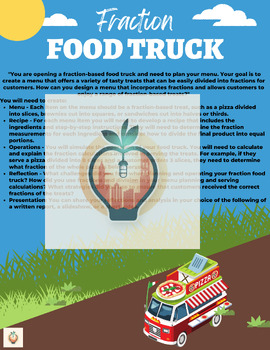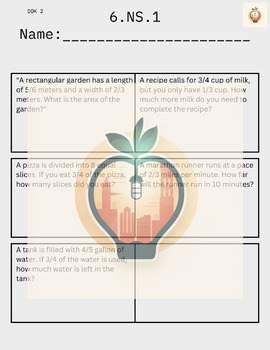Fraction Food Truck 6.NS.1 rubric

Description
Drive up to differentiated learning with the Fraction Food Truck! This engaging project-based learning resource allows students to explore fraction division concepts through hands-on activities related to running a food truck business. The multi-day project includes opportunities for interpreting and computing quotients of fractions at various DOK levels. Students will create story contexts for division word problems and use visual models to represent quotients. The connections between multiplication and division are emphasized to build conceptual understanding. Differentiation guidance helps teachers tailor the experience through process, product, and content to meet the needs of all learners. Turn your classroom into an engaged learning community and nourish mathematical thinking with the Fraction Food Truck! Lesson plan and rubric included.




